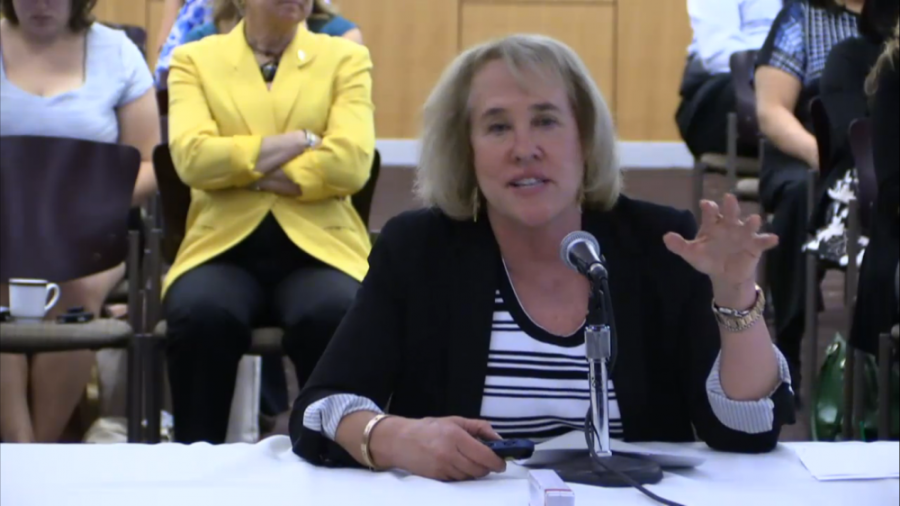The UA local student safety task force made recommendations regarding what actions could be taken to the Arizona Board of Regents Monday morning.
Melissa Vito, senior vice president for student affairs and enrollment management, presented the UA’s task force report to Eileen Klein, president of the board of regents, and student regent Kaitlin Thompson during a meeting at Arizona State University.
Vito said the main issue UA students are concerned about is the Tucson Modern Streetcar because a high number of students ride bicycles and skateboards.
“People are really nervous about how things will interact with each other,” Vito said.
Vito said the UA is working with the city of Tucson to increase safety around the streetcar. The UA is also pushing to reroute some of the bike lanes around the streetcar tracks, which the city has not wanted to do, she said.
Mark Timpf, assistant chief of police for the Tucson Police Department, said they will also be looking to examine safety issues for streetcar riders, as many are anticipated to be UA students.
“We’ve taken some steps to mitigate some of the issues that have come forward [regarding the streetcar],” Timpf said.
Vito also said that UA policies surrounding education on high-risk alcohol use have been successful, including high readership of Campus Health Service’s RedCup Q&A.
One key recommendation the UA task force made is to increase the number of on-campus, alcohol-free events to offer to students. Vito said moving Spring Fling back to campus this year helped to reduce incidents of extreme intoxication among UA students for that weekend.
“Every indicator that we would look at was down among DUIs, MIPs or extreme [alcohol] use,” Vito said. “We can’t do Spring Fling every week, but … we definitely need to do more in that area.”
A “Good Samaritan” policy is also being considered by law enforcement. The policy would give more leniency to students who help other students when they are concerned for someone’s safety regarding alcohol use.
“Students have been saying for several years that our fairly rigid MIP policies and DUI made students really nervous to get help for other students,” she said.
Vito also spoke about how the UA has been handling mental health issues among students. She said the UA is looking to increase the number of mental health clinicians serving UA students, which currently stands at about 2,500 students to one clinician.
One recommendation from the safety task force was to more consistently address students who are impacted by sexual assault at the UA. The Obama administration in recent months has been increasing the pressure on universities across the country to better address the issue of sexual assault on campus.
The UA task force looked at local and national data on safety issues and received input from areas of campus such as the Disability Resource Center, Campus Health Service and Counseling and Psychiatric Services, Vito said. She also led a local meeting at the UA in late April to hear input from members of the community.
The Statewide Student Safety Task Force was formed by the board of regents in the fall of 2013 to promote student safety issues at the universities and to identify state universities’ best practices on student safety.
Each of the state universities — the UA, ASU and Northern Arizona University — formed local task forces to address safety issues at each of their respective universities. The UA’s local task force was comprised of regents, UA students and members of the Tucson and UA communities. The UA’s report for the task force has yet to be finalized, Vito said.
Klein said the regents would be looking at how they could address student safety issues at all three state universities from a statewide level. She said she was pleased with how each task force performed.
“Over the past several months, if I could characterize it, I think it’s been a really healthy conversation,” Klein said. “We’ve identified some possibilities for improvement and that’s really the goal.”









